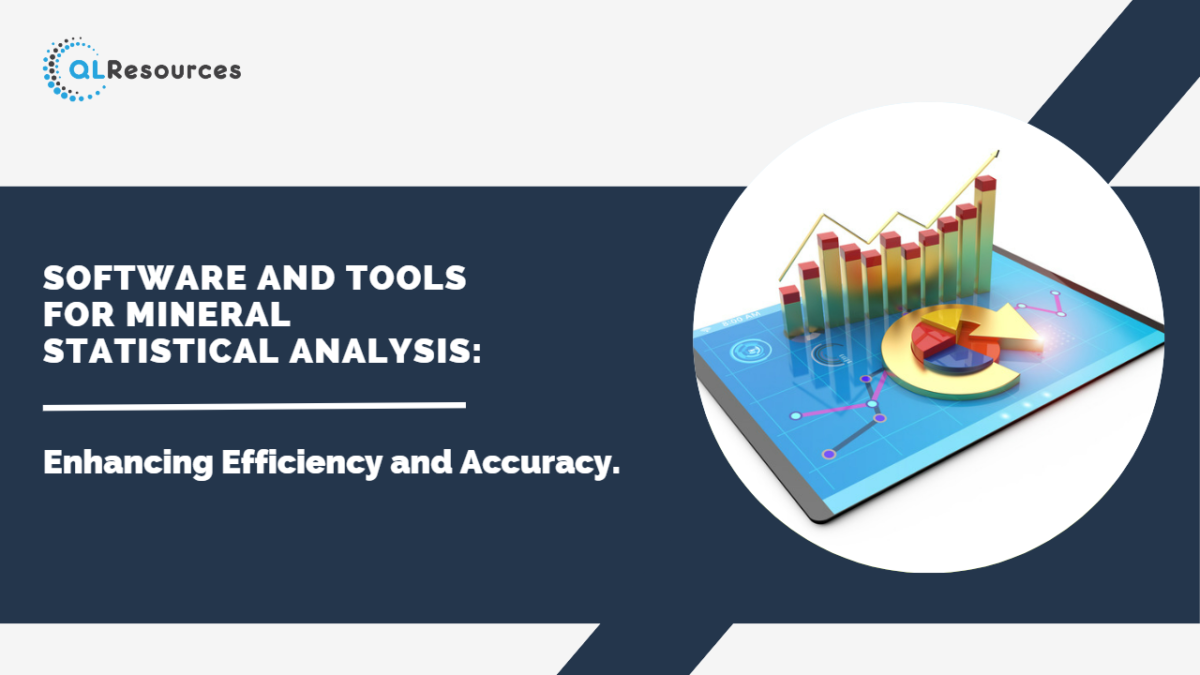Mineral statistical analysis plays a crucial role in the mining industry, helping companies extract valuable insights from data to optimise mineral exploration, resource estimation, and mining operations. By applying statistical methods to real-world mining projects, companies can make informed decisions, reduce uncertainty, and maximise the efficiency and profitability of their mining endeavors. In this blog post, we will explore case studies that demonstrate the practical application of statistical analysis in various stages of mining projects.
Ore Grade Estimation and Resource Classification:
In a gold mining project, a company wanted to estimate the ore grade and classify the resources accurately. They collected drill core samples from various locations within the ore deposit. The collected data was then subjected to statistical analysis, including geostatistical methods like variogram modeling and kriging interpolation. By analysing the spatial variability of the ore grades, the company generated a reliable resource classification, allowing them to optimise their mining plan and prioritise high-grade areas for extraction.
Mining Process Optimisation:
A copper mining company aimed to improve the efficiency of their flotation process, which separates copper minerals from gangue minerals. They conducted a statistical analysis of the process variables, such as pH levels, reagent dosages, and particle size distributions. Using statistical tools like design of experiments (DOE) and response surface methodology (RSM), they identified optimal operating conditions that led to higher copper recovery and reduced operating costs.
Blast Design and Fragmentation Analysis:
In an open-pit mining project, a company sought to optimise blast design for better fragmentation, which impacts the downstream processes like crushing and milling. They collected data on various blast parameters, such as drilling patterns, explosive types, and blast hole diameters. By conducting statistical analysis, including regression analysis and analysis of variance (ANOVA), they identified the significant factors affecting fragmentation and designed more effective blasting practices, resulting in reduced energy consumption and improved productivity.
Environmental Impact Assessment:
In a coal mining project, a company aimed to assess the environmental impact of their operations on water quality. They monitored water samples from nearby streams and analysed the data using statistical techniques like time series analysis and spatial statistics. By identifying temporal and spatial trends in water quality parameters, they implemented measures to mitigate environmental impacts and comply with regulatory requirements.
Equipment Reliability Analysis:
In a large-scale iron ore mining project, a company wanted to improve the reliability of their heavy machinery, such as haul trucks and excavators. They used statistical methods, including Weibull analysis and reliability growth modeling, to analyse equipment failure data. The analysis provided insights into equipment failure patterns, allowing the company to implement preventive maintenance strategies and reduce costly downtime.
Conclusion:
These case studies demonstrate the practical application of statistical analysis in real-world mining projects, showcasing its significance in various aspects of the mining industry. From resource estimation and mining process optimisation to environmental impact assessment and equipment reliability analysis, statistical methods provide valuable insights and solutions for mining companies. By harnessing the power of statistical analysis, mining companies can make data-driven decisions, improve operational efficiency, and ensure sustainable and profitable mining practices. As technology continues to advance, the integration of statistical analysis in mining projects will play an increasingly essential role in shaping the future of the industry.
Join our community and never miss an update! Subscribe to our newsletter and blog to stay up-to-date on the latest trends, tips, and insights in your area of interest. Don’t miss out on exclusive content and promotions. Sign up now and be a part of our growing community!

